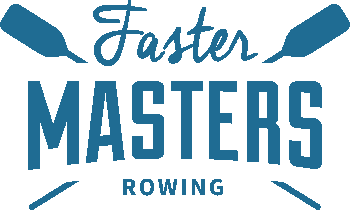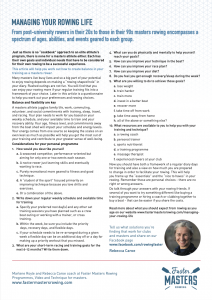What should you expect from your rowing as you age?
These observations are from my experience and there certainly are variations between different people but these are some trends.
Check each decade to see what you could be experiencing now and into the future for your own rowing practice.
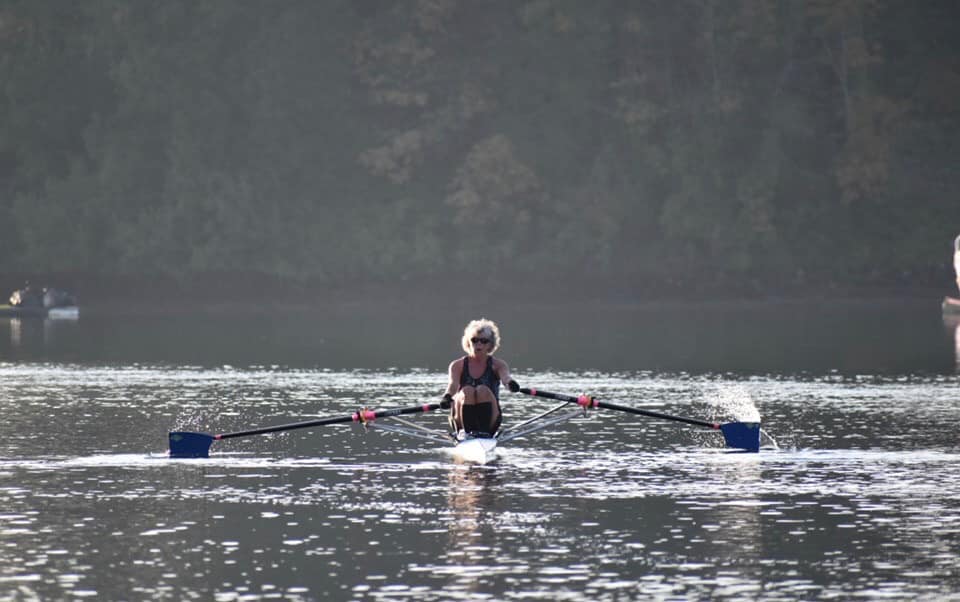
20s and 30s
If you are a former student athlete and you continue to train as you start your career, work, or family, you can maintain a high level of fitness close to that of your university years and even surpass that fitness. Provided that you are living a reasonable “athletic-lifestyle” your body has a great recovery capacity and you can certainly push your limits. Many single scullers reach their peak in their late 20s early 30s. In masters rowing, high-energy athletes in this age group often train 6 to 9 sessions per week including land and water workouts. If you are new to the sport 3 to 4 sessions per week will provide a good base for technique, for additional fitness you can include more land-based training.
40s
You will often have limited time in this decade and have to weave your rowing in between your career and family demands. So the key here is making sure that you get adequate training to support the level of your goals and to put a priority on quality workouts versus quantity. Getting enough sleep and recovery is an important training factor not to be overlooked. Top masters in this age group are likely to train 5 to 7 sessions per week; newcomers should aim for 3 to 4 rowing sessions complemented with cross training until a good base is established.
Rowing and Menopause
Take a look at the speakers and the detail of what you’ll learn.
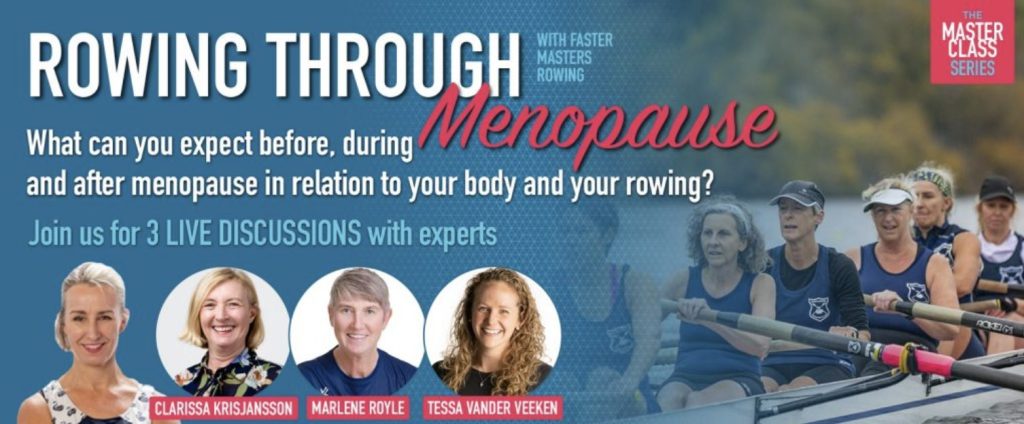
50s
This is one of the most competitively-minded groups in masters rowing; especially among women. This is often a time when your career is well-developed, the children are a bit older allowing more personal time for pursuing rowing goals and motivation is very high. It can also be a time when many new masters join the sport because they now have some additional time to follow personal interests or have the opportunity to pursue athletic goals they had earlier in life but put on hold.
With your 50s come metabolic and hormonal changes in both men and women. Sleep patterns may be disrupted, unwanted weight gain can happen easily, so diet and sleep need to be watched carefully. If you are lacking sleep at night it is important to take short power naps before or after training so that your workout has quality. Recovery has to be monitored more closely and if you are feeling run down, boost your protein intake and take additional rest. Always err on the side of caution. The top competitors in this age group train 5 to 7 sessions per week. Newcomers must take care not to over do it, your body needs time to adapt to the training and doing too much too soon can cause over-use injuries or set backs. Your body must adapt on the cellular level and this takes time.
60s
The body undergoes greater metabolic changes during the 50s decade and so your 60s can be a fairly stable decade provided you have no major or unfortunate health issues to deal with. Retirement offers more training time, at much as one can tolerate safely, and also allows for more recovery time. With each additional year of age, recovery becomes paramount to success. You may not be hitting personal best times compared to when you were 40 but you can certainly maintain a high level of competitiveness and fitness through this decade and keep your erg score pretty steady. Technical improvements become more and more critical as the ability to increase hours of training is limited for recovery reasons. It’s far better to get coaching and gain boat speed technically than trying to pile on extra training hours. Maintaining flexibility, proper recovery, and injury prevention must be closely attended. Top masters in this age group train 5 to 6 sessions per week. Novices may want to aim for 3 sessions and gradually build up as tolerated.
70s
Seasoned rowers, in their 70s are some of the first humans to have been athletic most of their lives. This age group is no less competitive than any younger age group especially on the international masters level. Athletes have reported to me that when they turn 70 their body goes through another major change as it did in their 50s, primarily that the body’s response to exercise becomes more unpredictable.
Typical workouts now require much more recovery, two to three days compared to one day in years past but it can change from week to week. The main factor here is to continue your training but be flexible to adjust for your recovery needs. Some days you may need to simply go for a walk if it means the next day you can again have a quality workout. You may want to look at varying your weekly schedule to be one day on one day off or two training days followed by a rest day, or include active rest days between harder rows. Again, it is very individual and one has to be prepared to adjust as your body dictates. There is every reason to continue to get coaching to row better, to maintain flexibility and muscle mass, and to maximise your time on the water. It’s also a great way to get out in team boats and row for health, friendship, and well-being.
80s and 90s
This age class is growing and I suspect it will only continue to grow in years to come. Already 70-year olds tell me that they can’t wait to move into the next age group. I repeat all the same points for the 70-year olds with an even great emphasis on recovery and injury prevention. Always err on the side of caution. Safety concerns should be paramount in conjunction with health and well-being.
100s
I am sure this age group will expand.
Additional Resources
Masters Rowing Advocates
Would you like to publish this article in your club newsletter or website?
Join our Masters Rowing Advocates mailing list and we will send you one article a month. Sign up on our Advocacy page.
You can copy the text on this page. Or download the PDF
